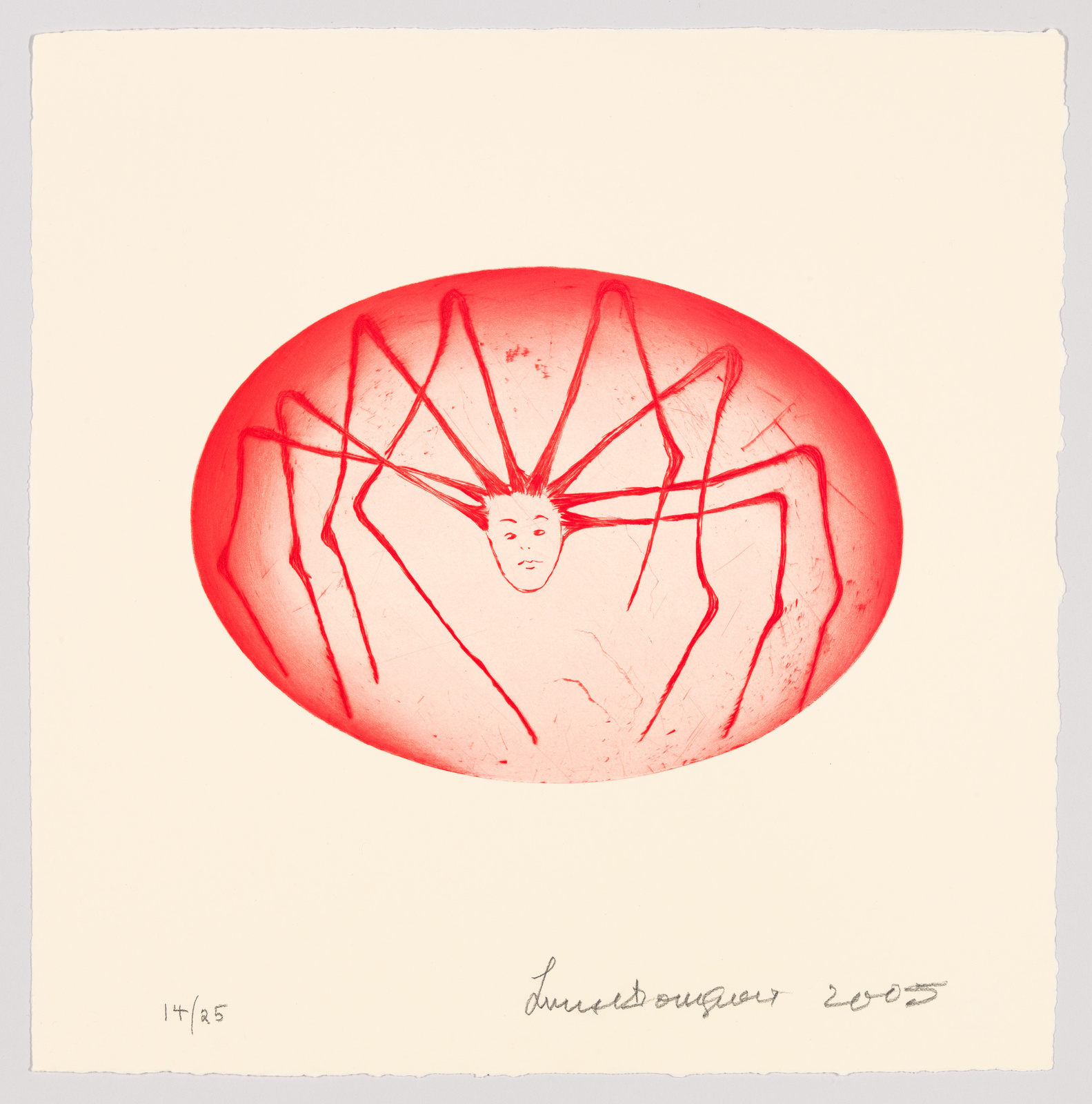Louise Bourgeois included spiders in her work for many years, explaining that the theme related to her mother who rewove antique tapestries that had grown threadbare. Here, the spider motif is central to the composition: it is compressed to fit the contours of the red oval, which might be seen as maternal in its suggestion of a womb or an egg. The spider’s body is created from a human head out of which long skeins of hair emerge and transform into legs. Like many of Bourgeois’s works, this one has mythological as well as personal references. In Greek mythology, spiders were created when the gifted weaver Arachne challenged the goddess Athena to a weaving contest. Arachne proclaimed her own work superior to the goddesses, and the goddess turned her into a spider. In some versions of the myth, Arachne’s transformation is a punishment for her arrogance, but other versions allow the possibility that Arachne’s work really was better than that of the goddess, who changed the young woman out of jealousy.
Not on view
Date
2005
Classification
Prints
Medium
Drypoint
Dimensions
Sheet (Irregular): 13 9/16 × 13 1/2in. (34.4 × 34.3 cm) Plate (Oval): 6 3/4 × 9 5/16in. (17.1 × 23.7 cm)
Accession number
2006.76
Edition
14/25 | 7 APs, 5 PPs, 2 HCs
Publication
Printed and published by Harlan & Weaver
Credit line
Whitney Museum of American Art, New York; purchase, with funds from the Print Committee
Rights and reproductions
© The Easton Foundation / Licensed by VAGA at Artists Rights Society (ARS), NY


